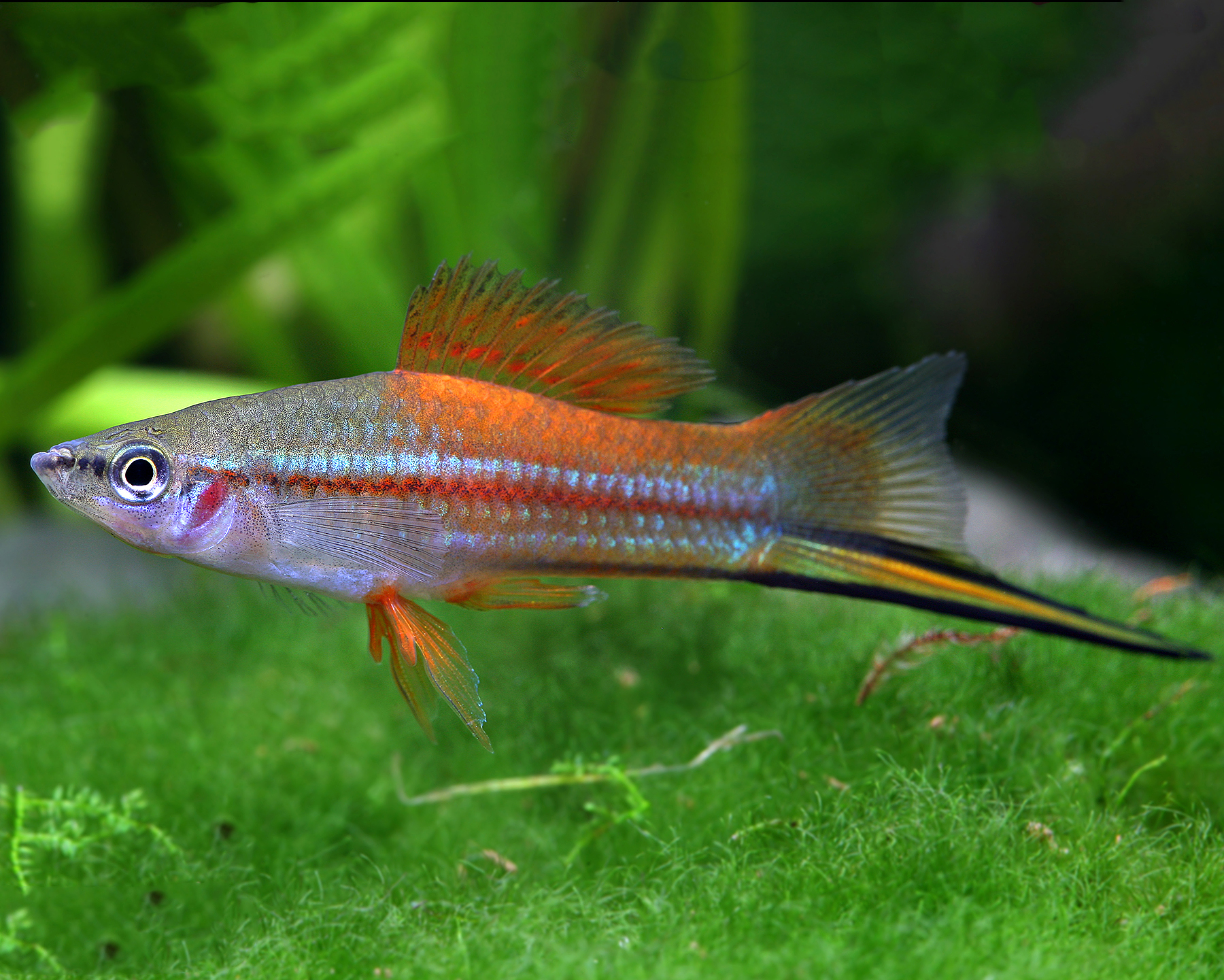Buying fish food - but which one? The different types of aquarium fish food
Table of contents
Fish are incredibly diverse creatures and inhabit a wide variety of underwater habitats. It is clear that they have also developed very different feeding strategies and do not feed in a uniform way!
Here we look at the four main categories of feeding types typically found in aquarium fish, we list the most common ornamental fish in the aquarium that fall into each category, and we give feeding tips.
Omnivorous - the omnivores
Omnivores among ornamental fish feed on both plant and animal foods, often in roughly equal proportions. In the wild, these fish often eat worms, insect larvae, food for landing, small crustaceans and the like, they pick at algae and also at plant remains that have fallen into the water, or they use dead or very soft water plants. This probably includes the majority of ornamental fish for the aquarium.
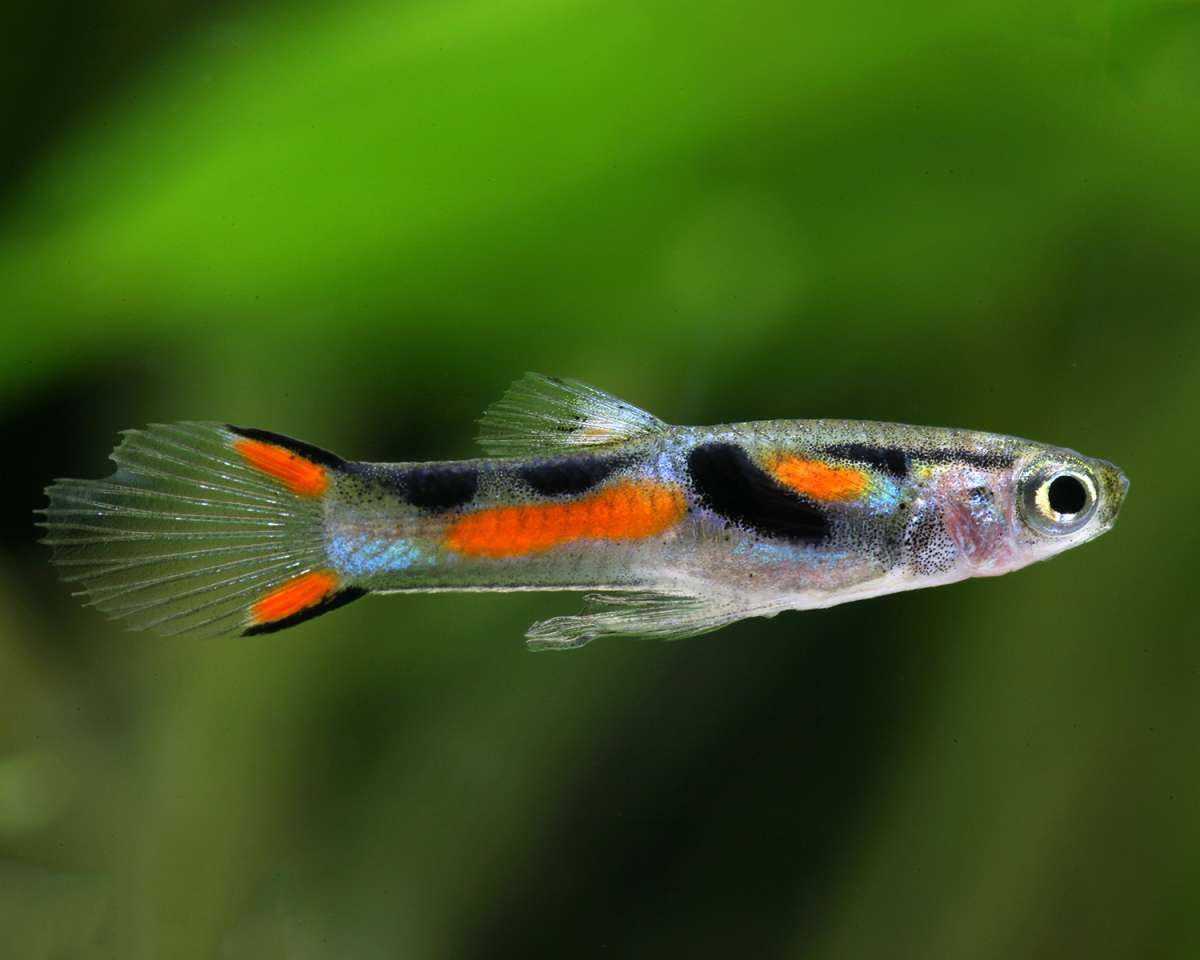
A diet for omnivorous aquarium fish therefore also consists of plant and animal components. For some species of omnivorous fish, however, the proportion shifts towards either plant or animal components, so you should feed the fish in the aquarium accordingly - you can supplement the food for omnivorous ornamental fish with frozen food or live food, if more animal content is required, if the focus of the fish diet is more on plant food, add soft vegetables such as tomato or pumpkin, scalded greens such as spinach or dandelion, or another special plant-based food to the omnivore diet.
Typical omnivorous aquarium fish are for example
- Guppies
- Platies
- Swordtails
- Mollies
- Neons and some other tetras
- gourami
- danios and barbs
... and many more.
Carnivores - the carnivores
Carnivores among ornamental fish include predators that hunt and eat other fish, but also insectivores, snail eaters and worm eaters that feed mainly on invertebrates.
Carnivorous ornamental fish should only have a very small amount of plant matter in their food - after all, they take up a little plant matter with the intestinal contents of their food animals in nature. However, too much plant matter in the fish food can lead to serious intestinal problems in carnivores. The fish become pale and apathetic, and their lifespan can be greatly reduced.
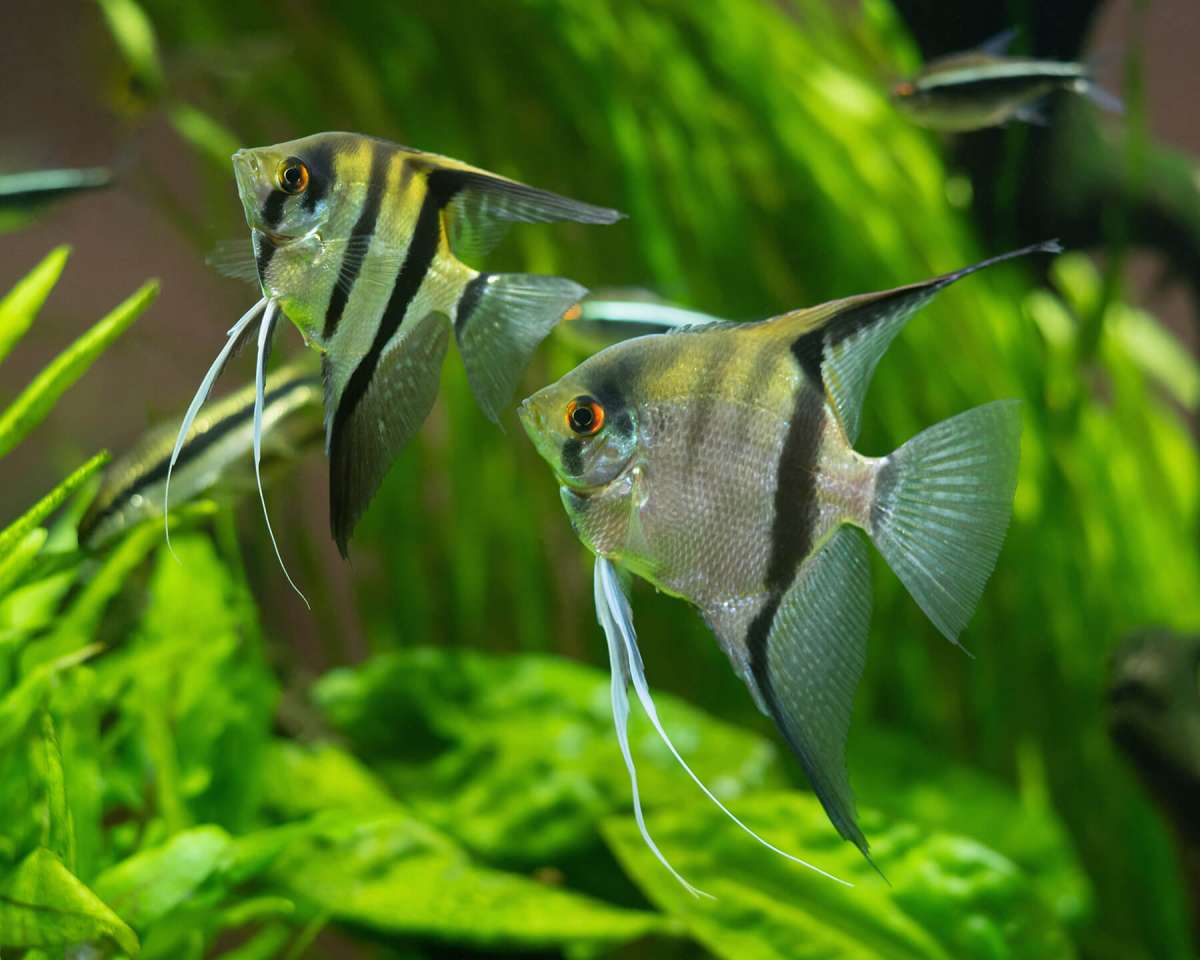
The best food for carnivorous aquarium fish is live food in the form of mosquito larvae, worms, small crustaceans and so on. According to sections 17 and 18 of the German Animal Welfare Act, no vertebrate animal may be killed without reasonable cause, and no suffering may be inflicted on vertebrates without reasonable cause. Feeding live fish is therefore not actually allowed - if there are alternatives.
However, the Animal Welfare Act Section 2 also states: "Anyone who keeps, looks after or has to look after an animal must feed, care for and accommodate the animal in a manner appropriate to its species and needs."
So if your carnivorous predatory fish cannot be switched to dead food or invertebrates, you may feed live fish. However, this is certainly an exception and is likely to be limited to very few species of fish in the aquarium trade.
Many carnivorous aquarium fish are also very happy to eat frozen food, and there are now also dry foods that are formulated to meet the needs of carnivores among ornamental fish.
Typical carnivores for the aquarium are, for example:
- Siamese fighting fish and other Betta species
- predatory tetra
- Tetras of the genus Nannostomus
- Angelfish and other South American cichlids
- some African cichlids
- snakeheads
- knifefish
- linnet pike
- predatory catfish
... and many more.
Molluscivores - the snail eaters
The molluscivorous ornamental fish are actually a subgroup of the carnivores - but they feed mainly on snails and mussels, which they crack and eat.
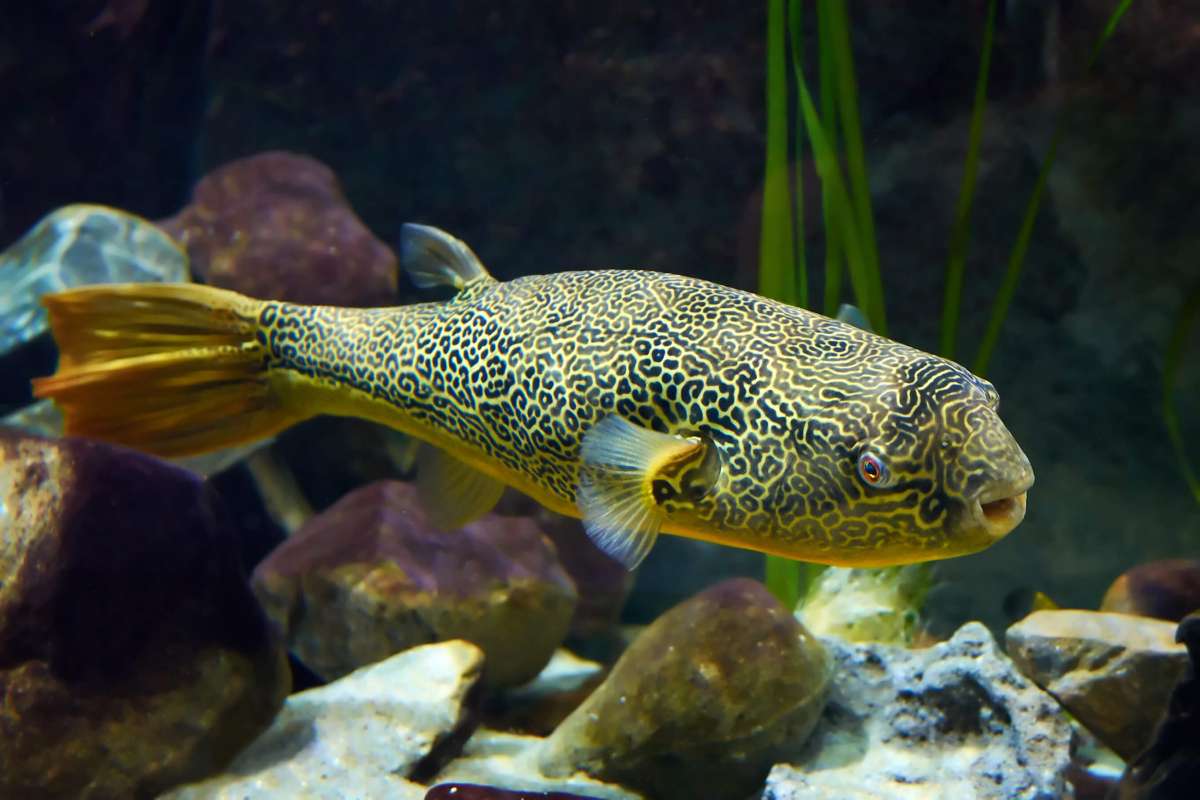
Snail-eating puffer fish grow a "beak" for this purpose, which wears out and therefore constantly grows back. If these snail-eaters among the aquarium fish do not get enough snails to eat, their beak can grow so much that the puffer fish can no longer open their mouth and then have to starve to death.
Snail eaters need live snails. In some cases you can switch them to dry snails and supplement their diet with mosquito larvae and similar live or frozen food - but there is no getting around feeding live snails if you want to feed the snail-eaters among the aquarium fish in a species-appropriate way.
Classic snail eaters for the aquarium are:
- various loaches
- and of course puffer fish
Please note that most of these ornamental fish have very special requirements for their aquarium (size, water values, additional stock) and that most of them do not fit into a normal community aquarium.
Limnnivores - the growth eaters
They are often mistakenly called algae eaters, but actually limnivorous fish feed on the growth on stones and wood. The growth naturally includes algae, but also protein-rich biofilms of microorganisms and even tiny food animals that live in the algae tufts - this is why limnivores are actually classified as omnivores, they are usually not purely herbivores. By the way, hard algae such as fur algae or beard algae are not eaten by the typical algae eaters for the aquarium.
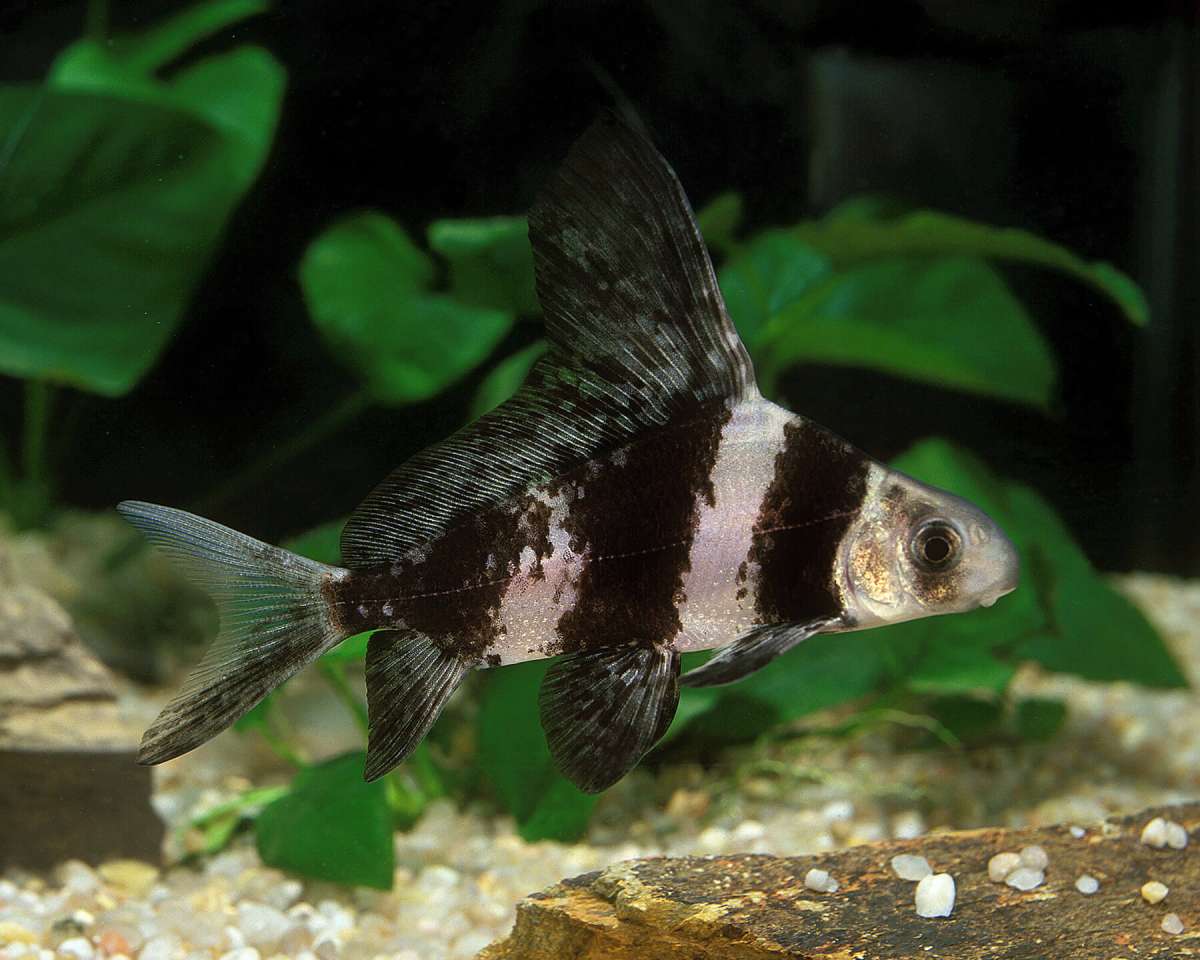
You can feed bottom-dwelling growth eaters well with sinking food tabs, cookies and wafers. Open water nursery eaters will also happily take a common food for omnivorous aquarium fish. All growth eaters like to nibble on soft vegetables, foliage or green food and usually do not take long to eat frozen food. Many growth eaters also go for aquarium plants with soft leaves.
Commonly kept growth eaters in the aquarium include:
- limnivorous suckermouth catfish
- Fouling loaches (including the cute fin suckers, for example)
- fringe lippers
- veiltail goldfish and other carpfish
- some goby species
- some cichlid species from East Africa (Mbuna)
... and some more.
Herbivore - the herbivores
Pure herbivores or plantivores are quite rare among the classic aquarium fish. For large aquariums, these include the pacu, for example, which feeds on fruits and nuts that fall from the shore trees into the water in its natural biotope. Guppies, mollies, platies, swordtails and sailfin are omnivores, but they feed quite heavily on plants and are therefore sometimes counted as herbivores or plant eaters.
